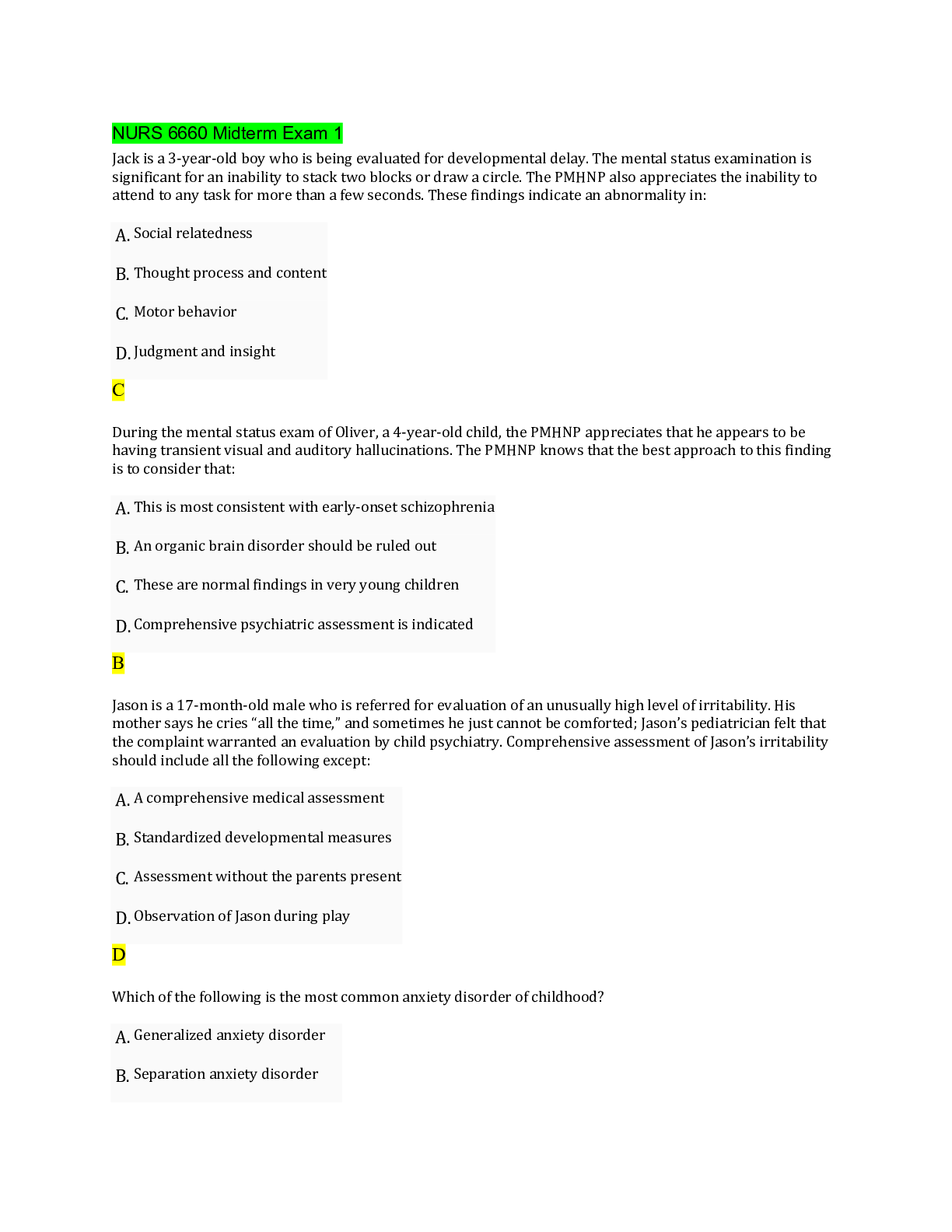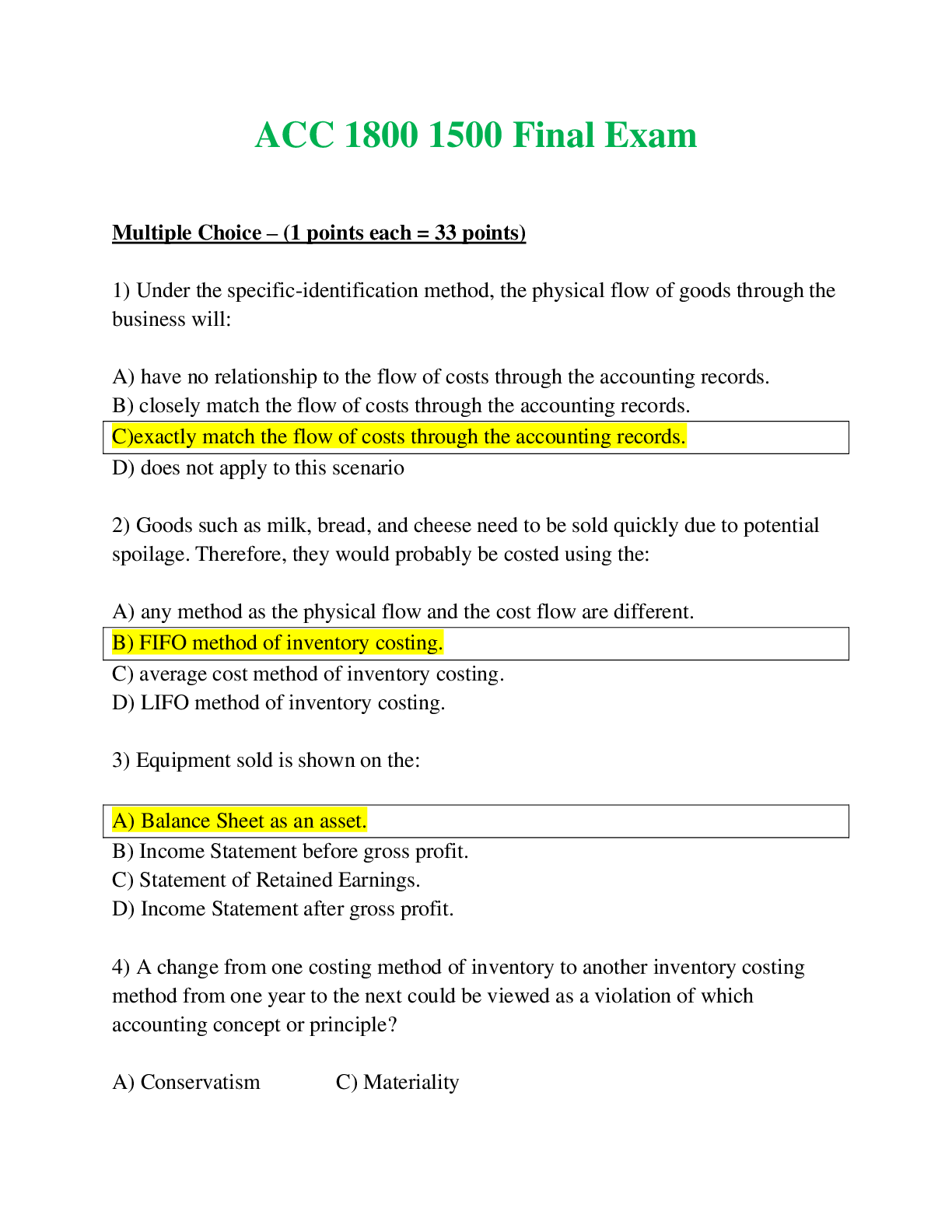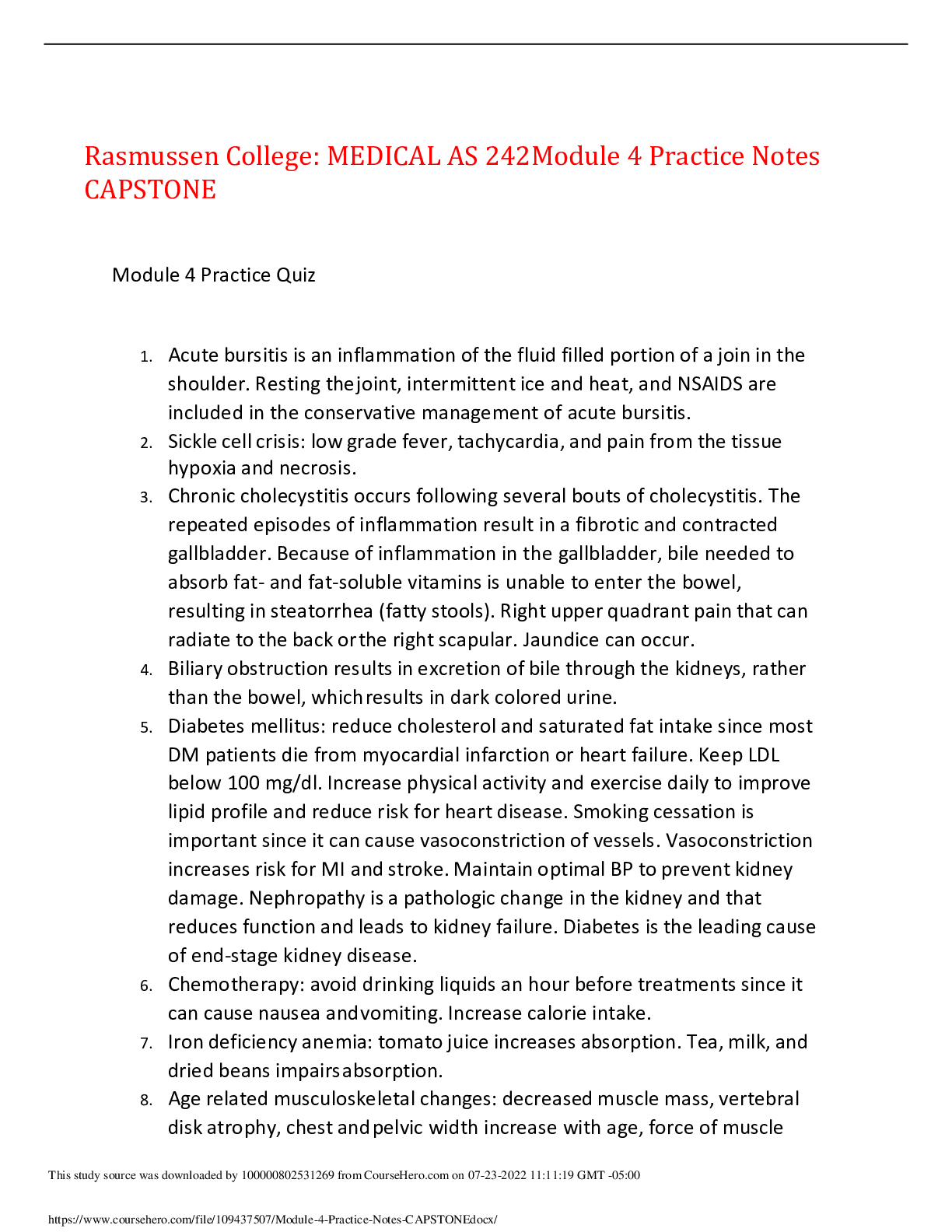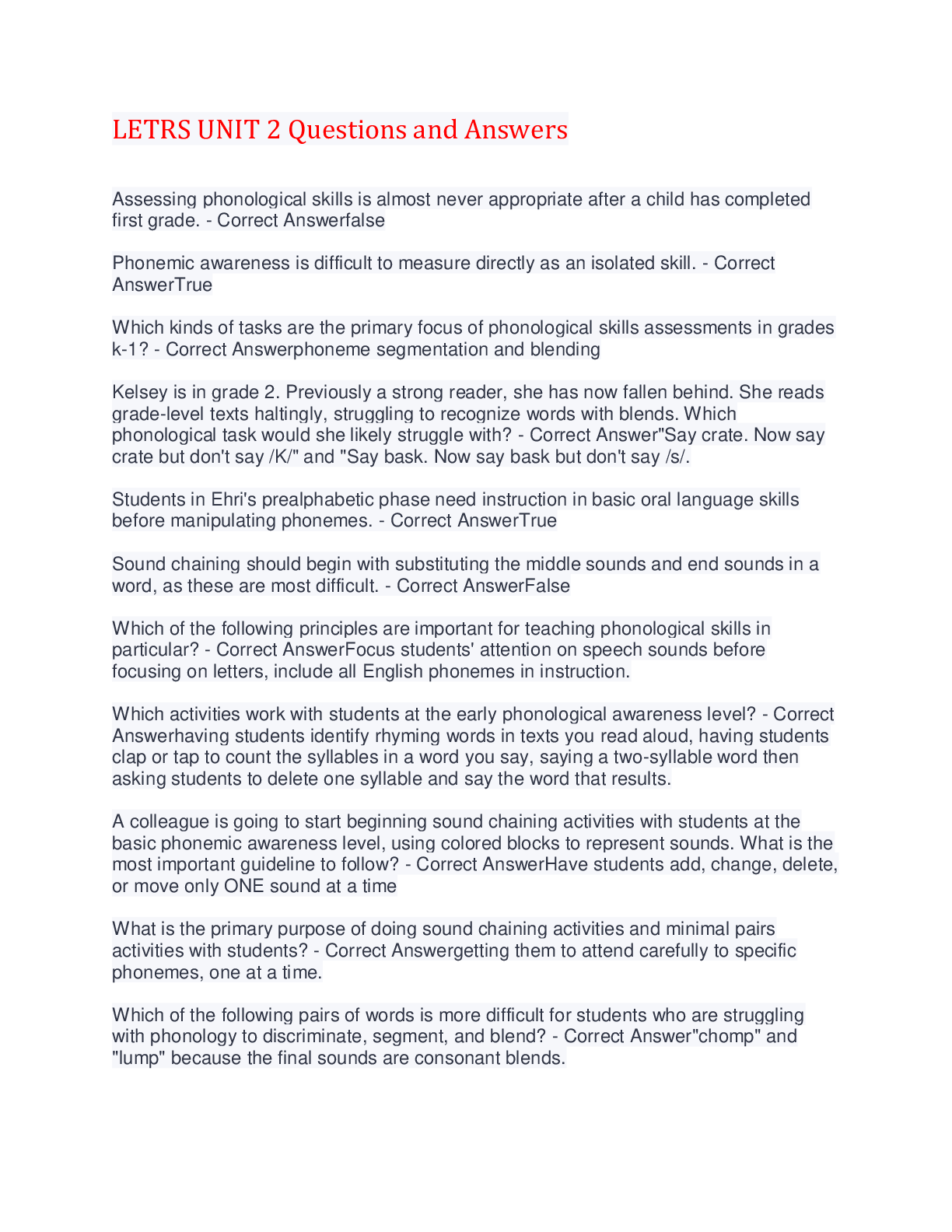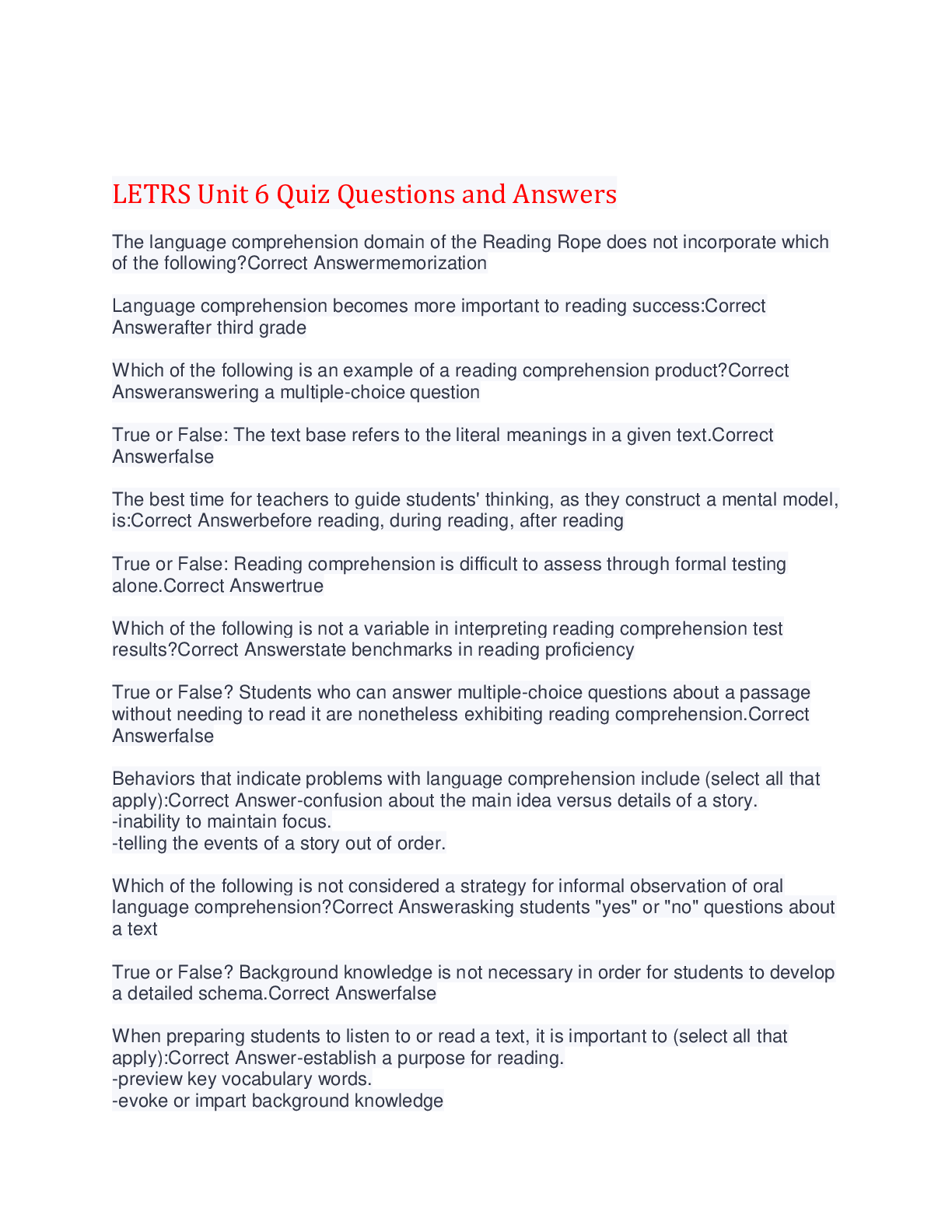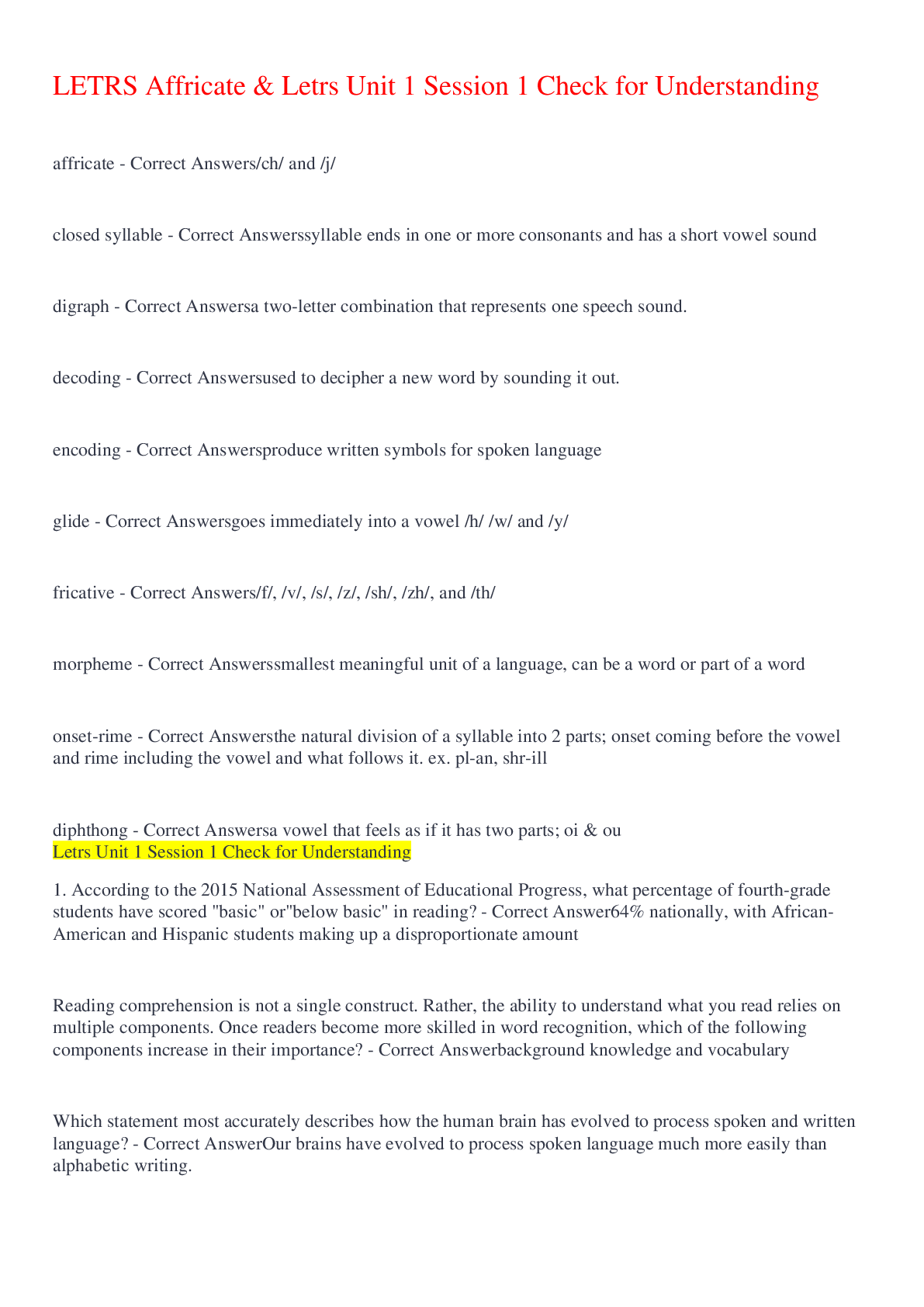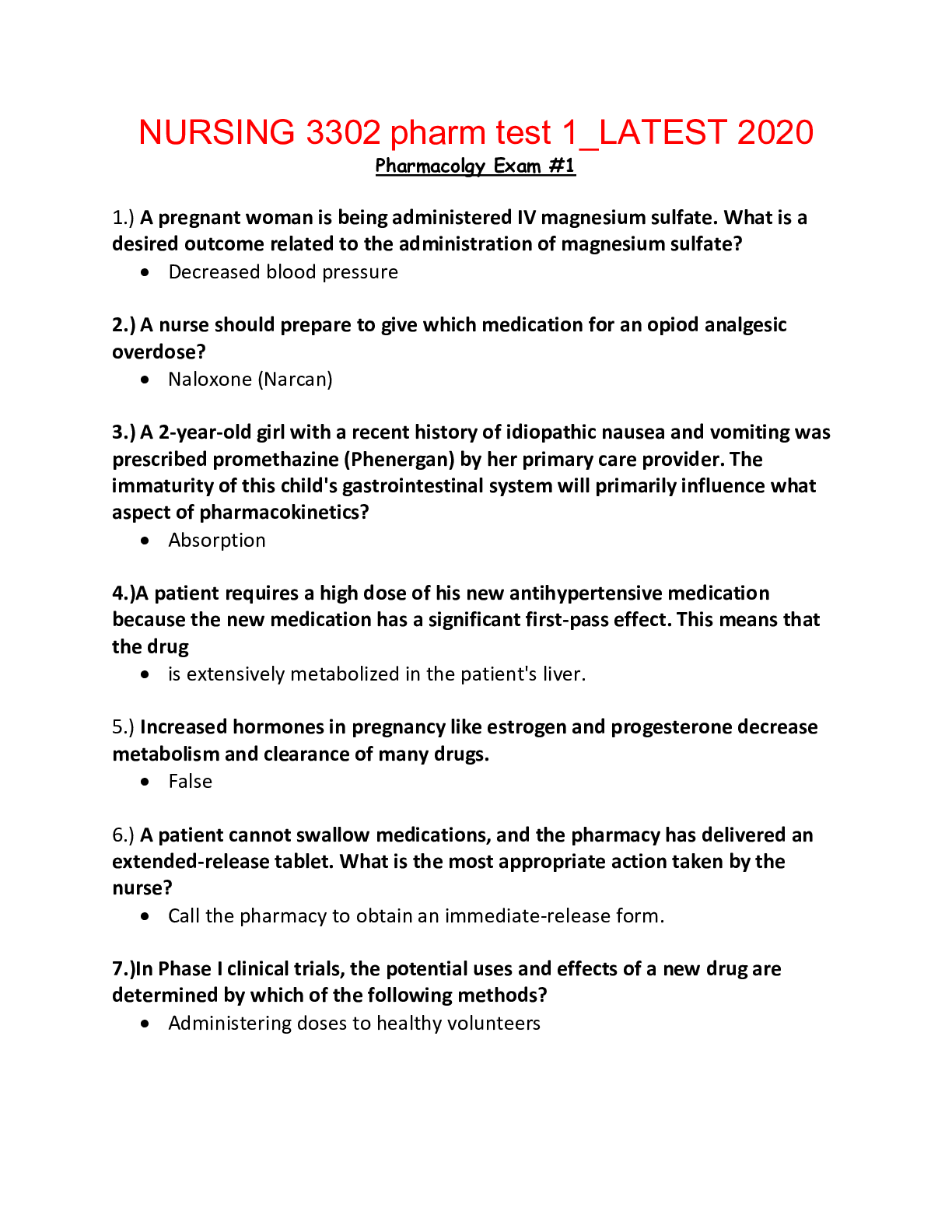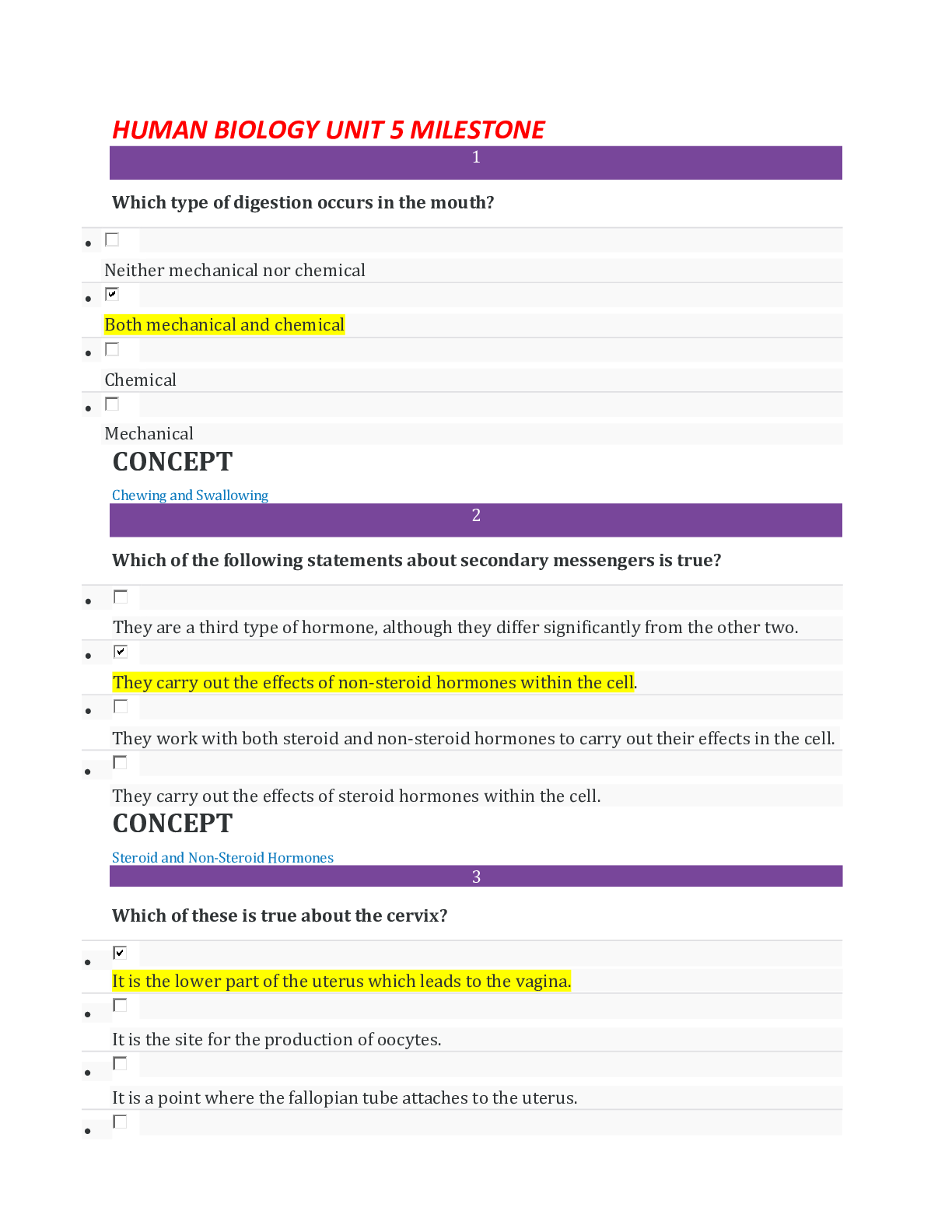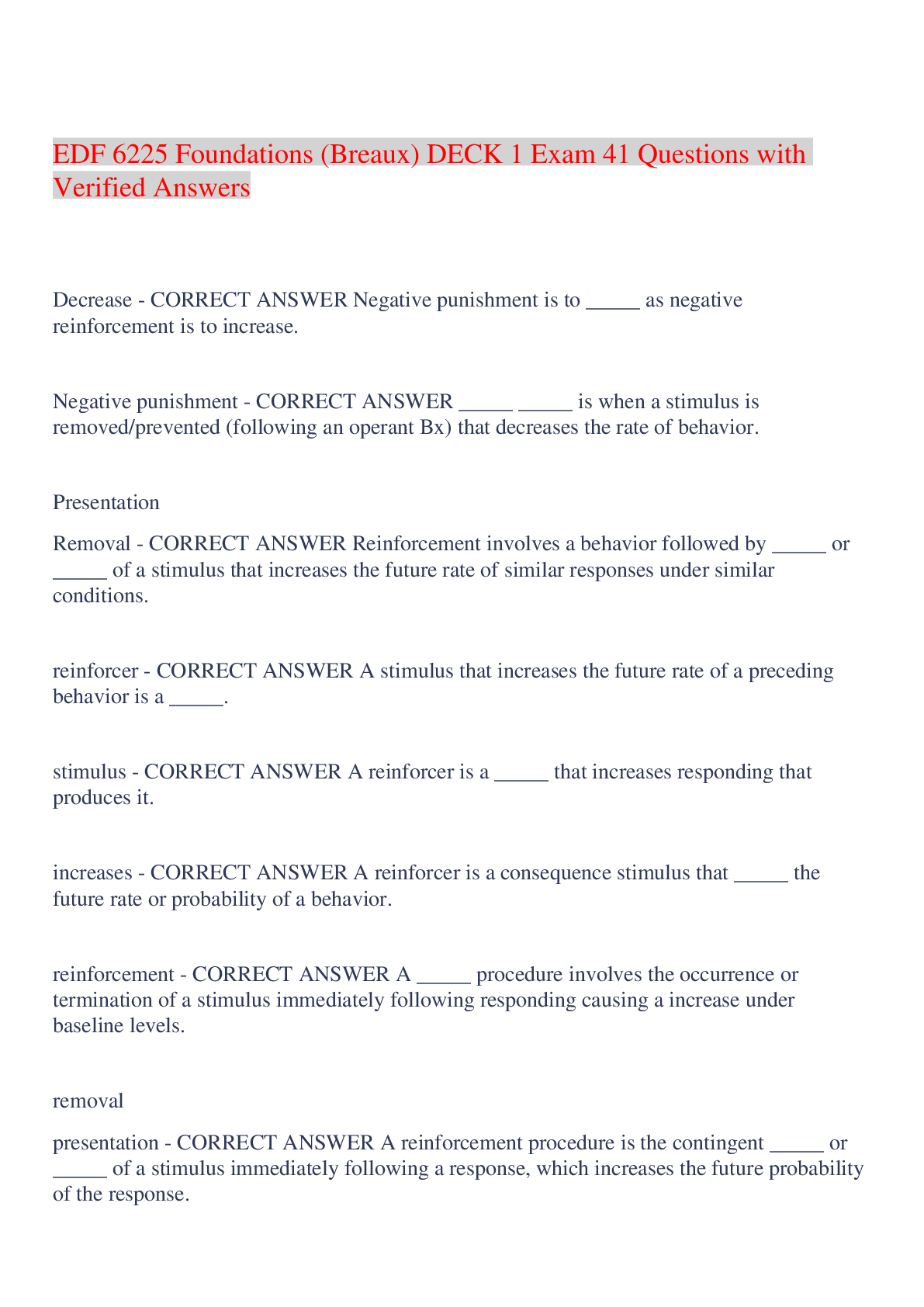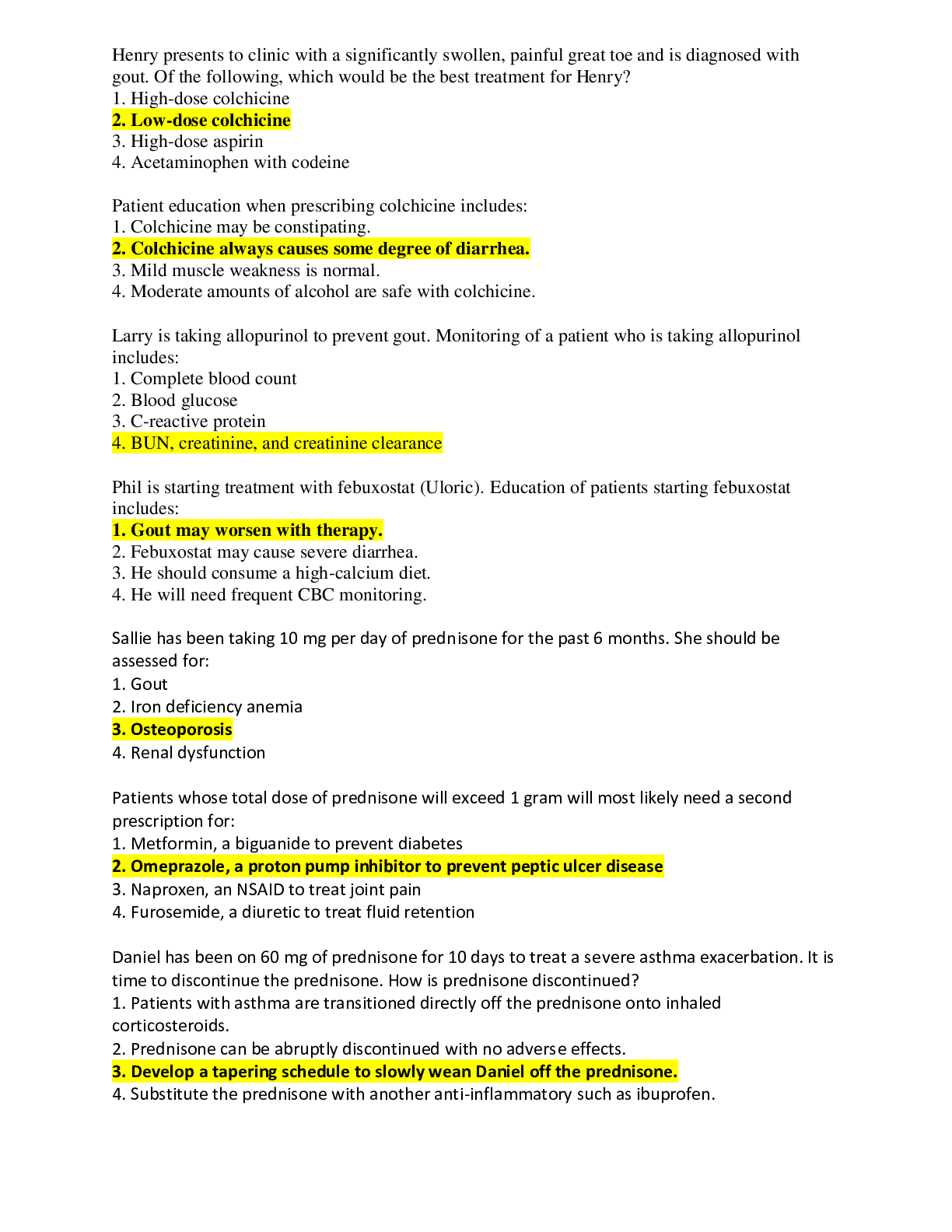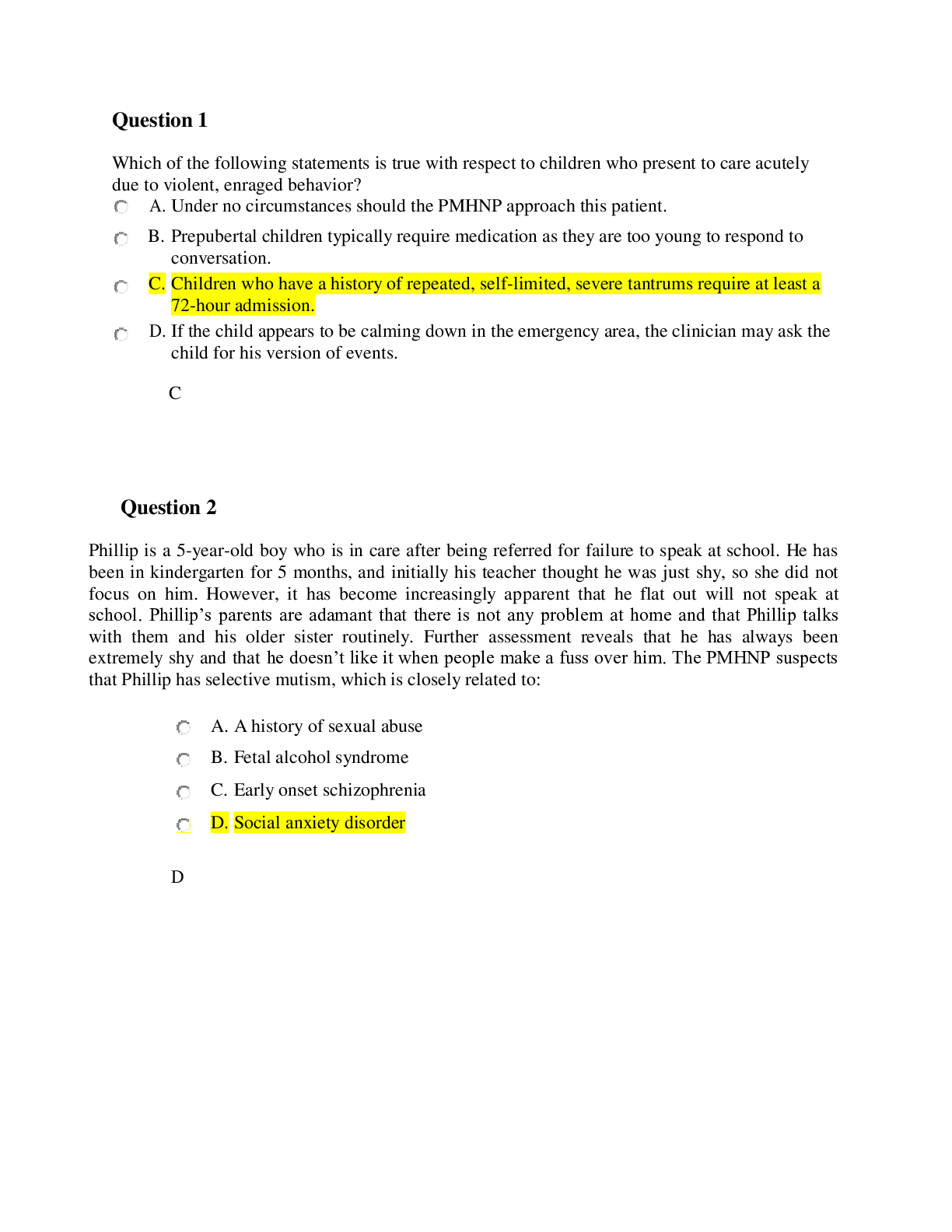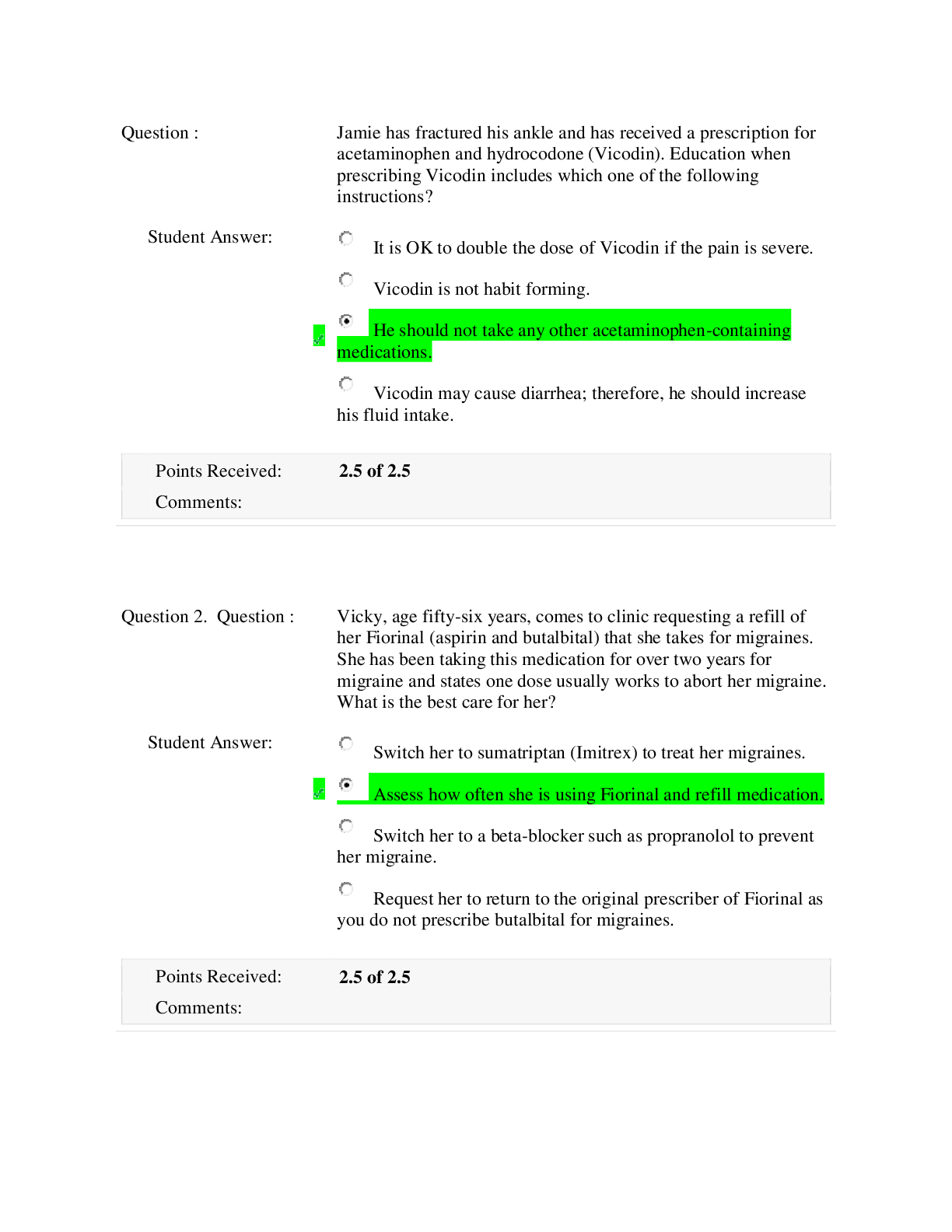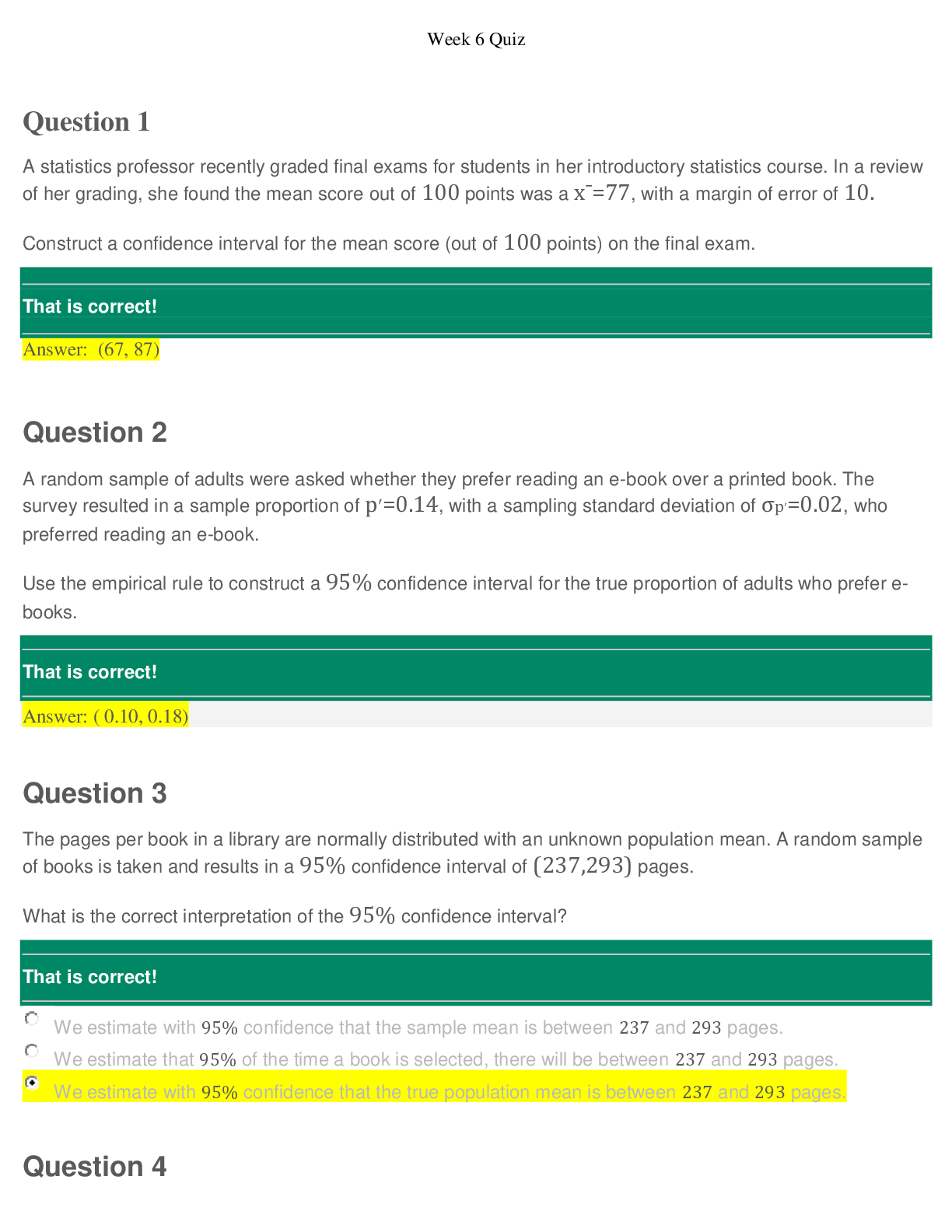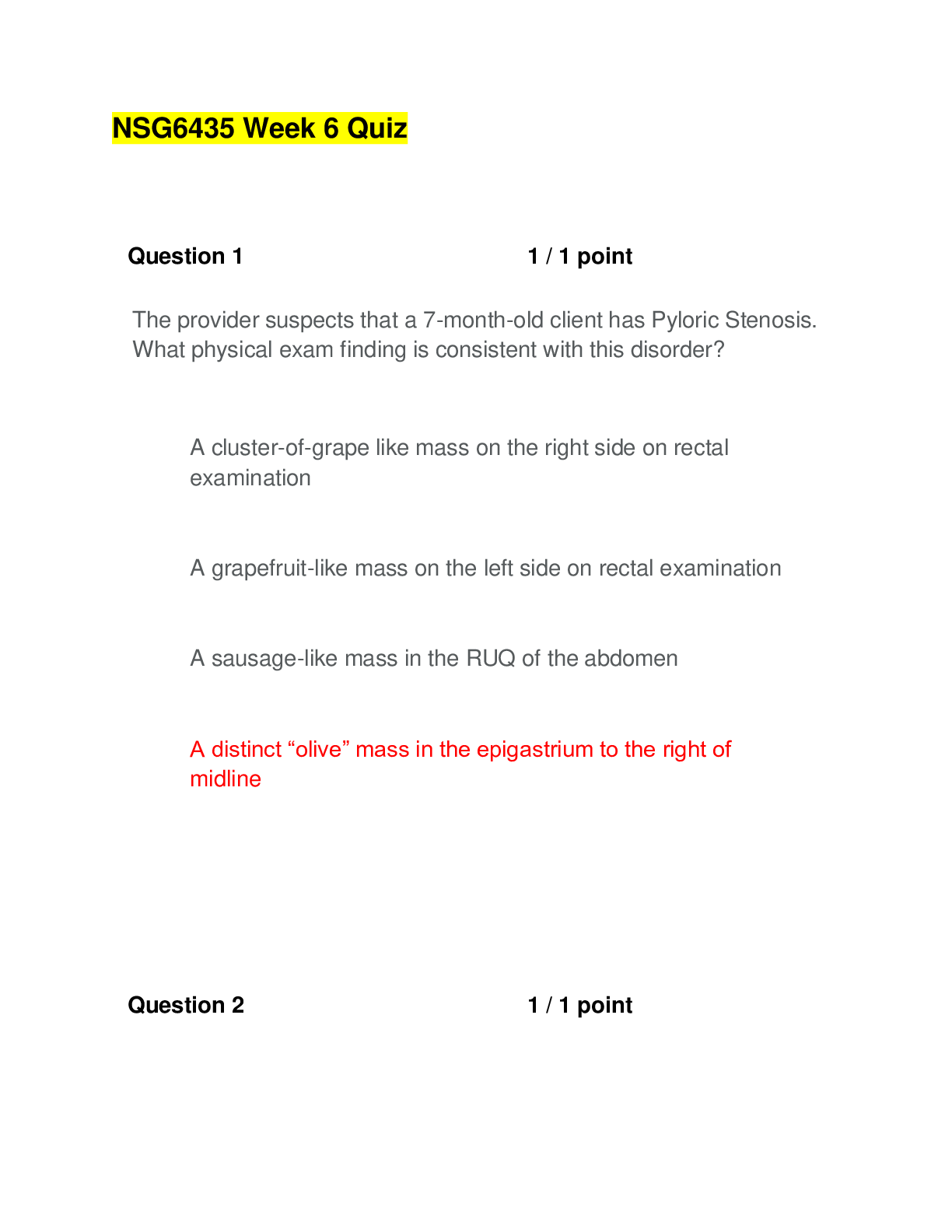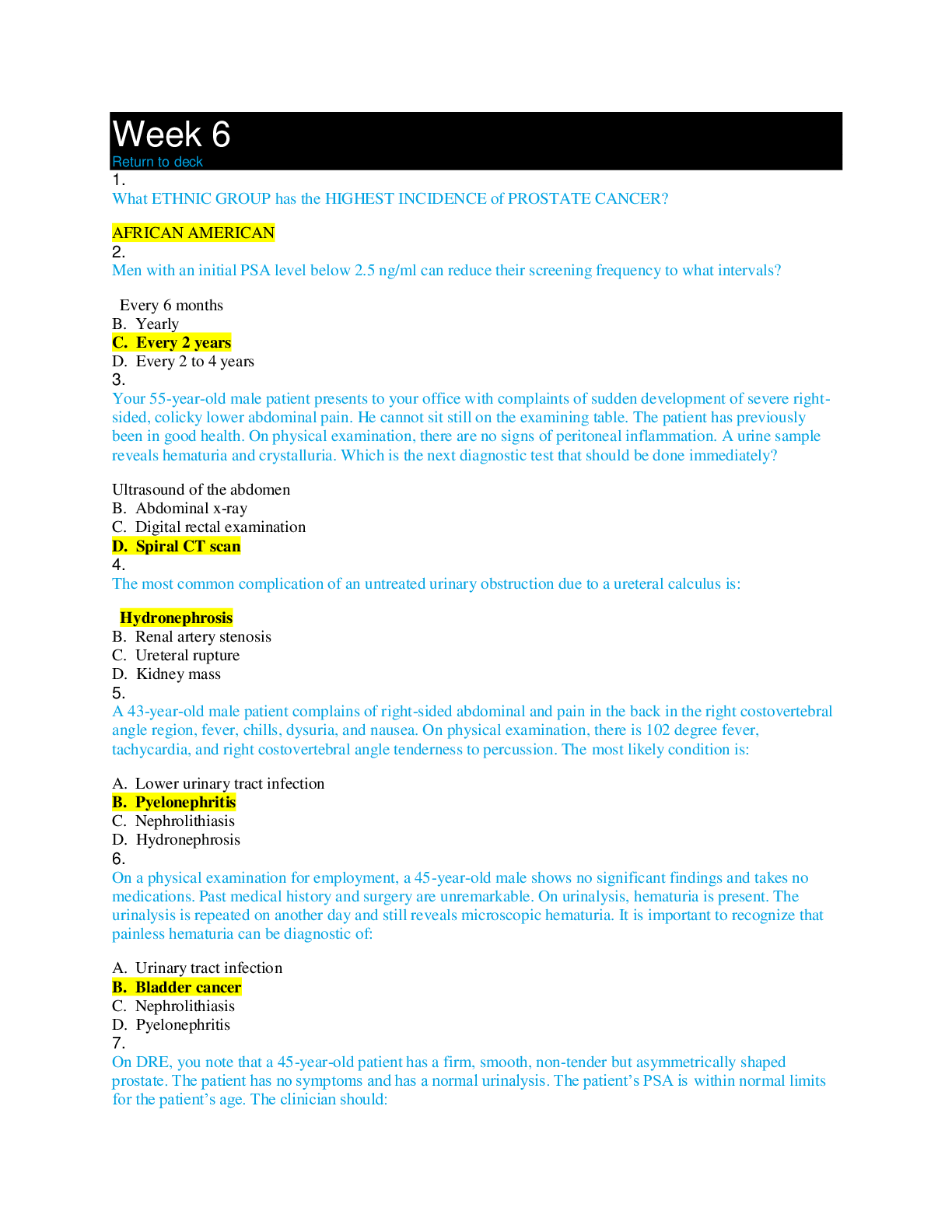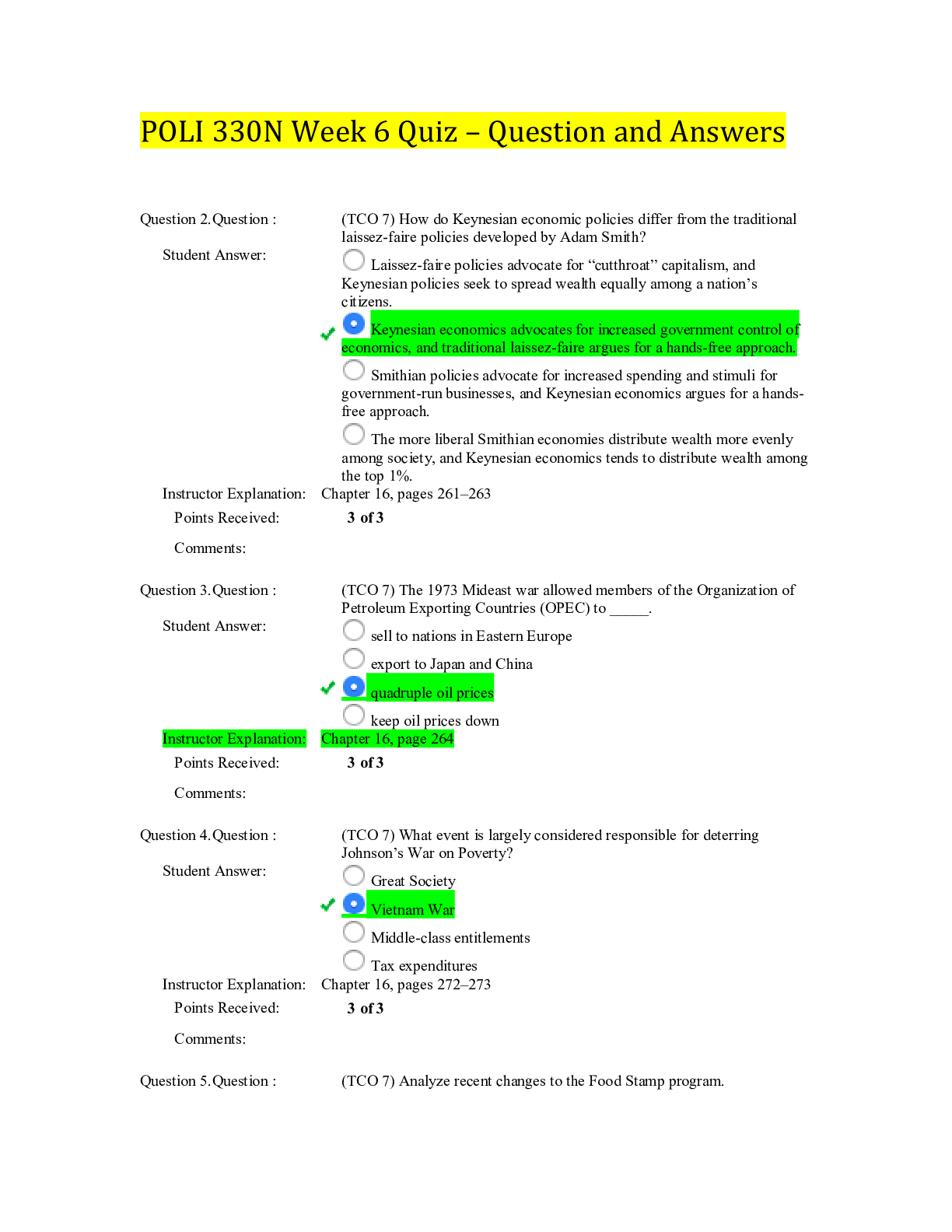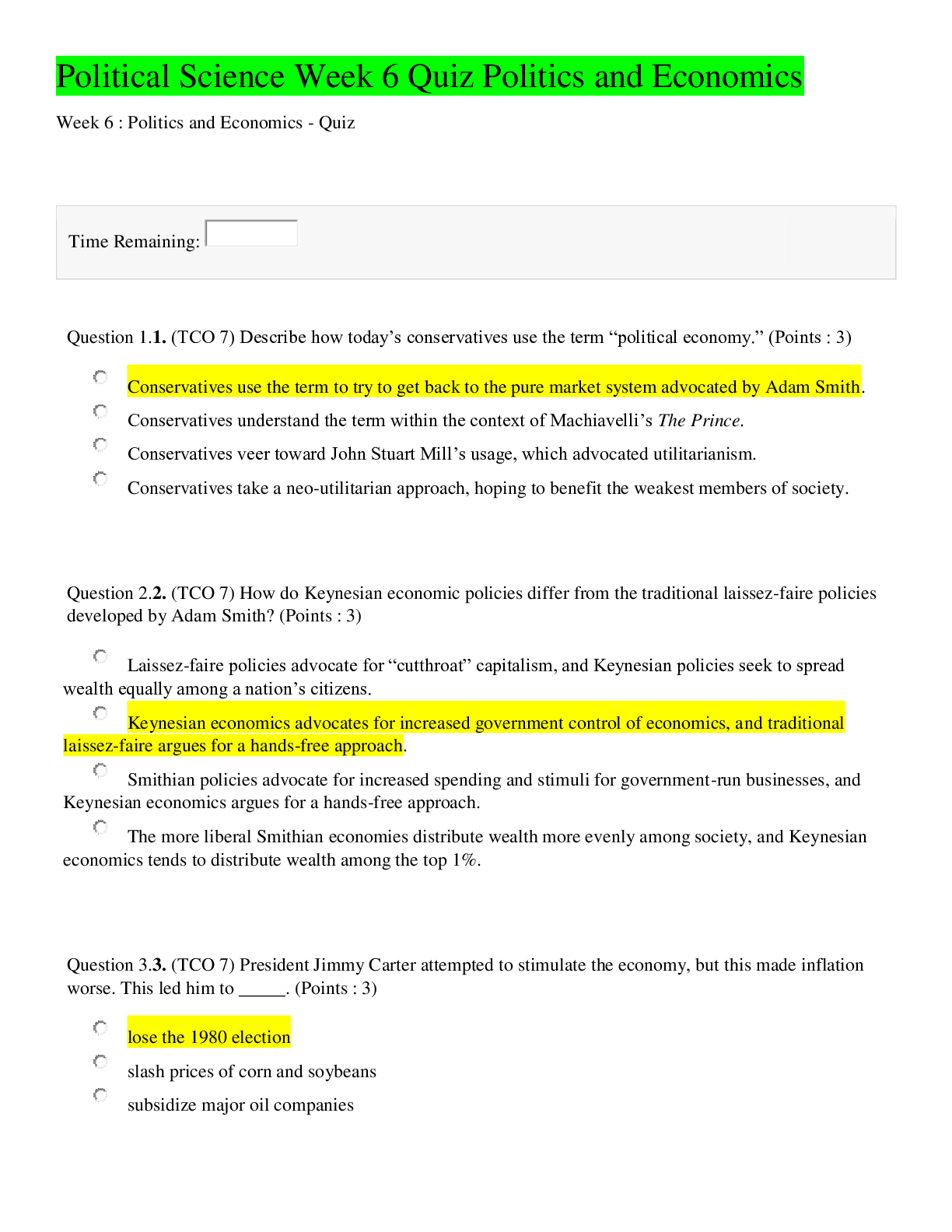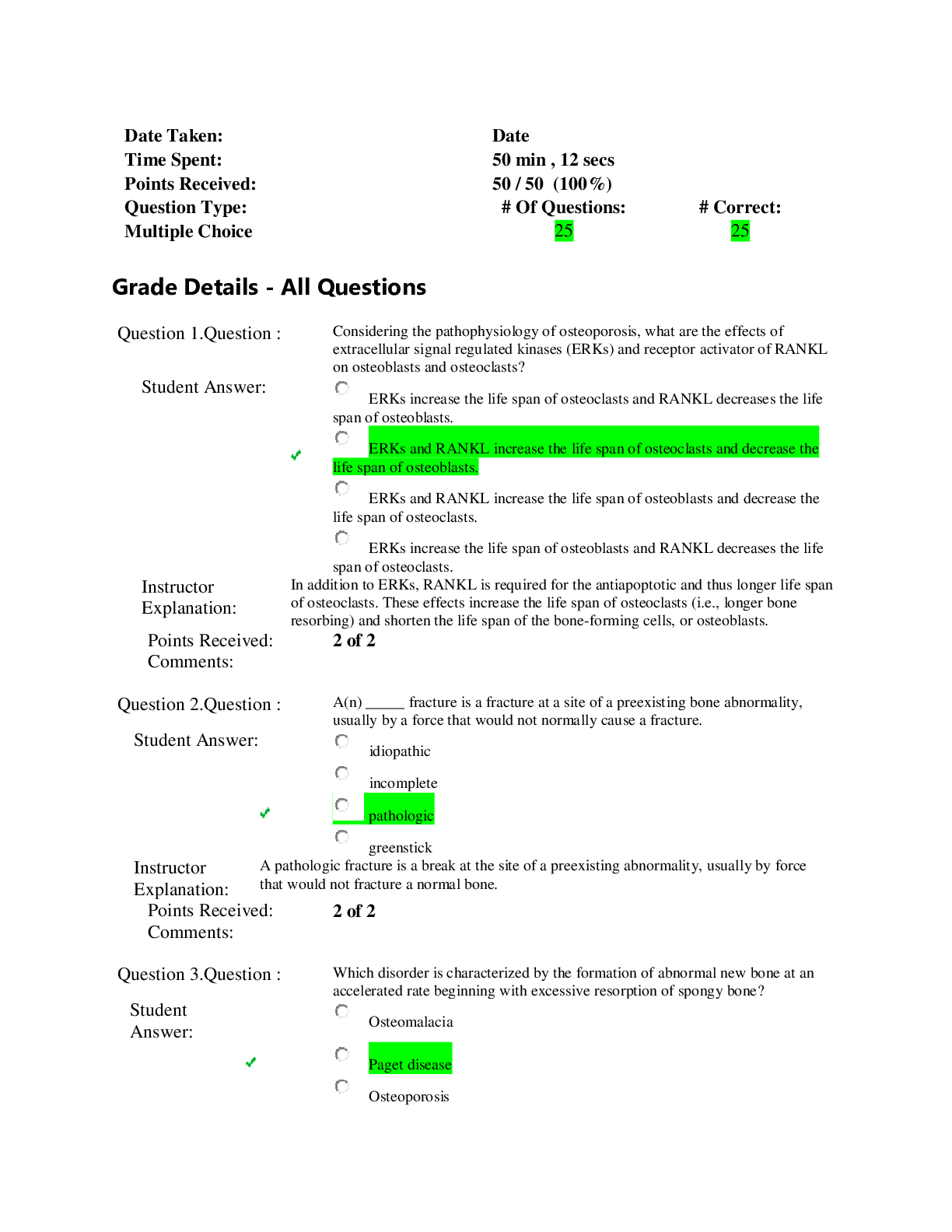NURS 6512N Week 6 Quiz - Question with Answers,100% CORRECT
Document Content and Description Below
The anteroposterior diameter of the chest is normally approximately the same as the transverse diameter in which age group? 2. A 44-year-old male patient who complains of a cough has presented to ... the emergency department. He admits to smoking one pack per day. During your inspection of his chest, the most appropriate lighting source to highlight chest movement is: Bright tangential light is best for visualizing chest movements. 3. When auscultating the apex of the lung, you should listen at a point: 4. You are documenting a rash between the eighth and ninth ribs on the lateral border. This intercostal space will be documented in terms of the: . 5. To count the ribs and the intercostal spaces, you begin by palpating the reference point of the: 6. When the umbilical cord is cut: 7. Fetal gas exchange is mediated by the: 8. The foramen ovale should close: 9. Increased oxygen tension in the arterial blood of a newborn infant causes: 10. To accommodate the enlarging uterus of pregnancy, chest changes result in: 11. The characteristic barrel chest of the older adult is the result of a combination of factors, including: 12. Nancy Walker is a 16-year-old girl who presents to the clinic with complaints of severe, acute chest pain. Her mother reports that, apart from occasional colds, Nancy is not prone to respiratory problems. Which potential risk factor is most important to assess with regard to Nancy’s current problem? 13. The patient tells you that she uses herbal and other alternative therapies to maintain her health. This information is recorded in the: 14. Mr. Curtis is a 44-year-old patient who has presented to the emergency department with shortness of breath. During the history, the patient describes shortness of breath that gets worse when he sits up. To document this, you will use the term: 15. Bradypnea may accompany: 16. Which chest structure contains all the thoracic viscera except the lungs? 17. Which bronchial structure(s) is(are) most susceptible to aspiration of foreign bodies? 18. Which finding suggests a minor structural variation? 19. Ms. Rudman, age 74 years, has no known health problems or diseases. You are doing a preventive health care history and examination. Which symptom is associated with intrathoracic infection? 20. The best time to observe and count respirations is while: 21. As you take vital signs on Mr. Barrow, age 78 years, you note that his respirations are 40 breaths/min. He has been resting, and his mucosa is pink. In regard to Mr. Barrow’s respirations, you would: 22. In which patient situation would you expect to assess tachypnea? 23. Which term would you use to document a respiratory rate more than 20 breaths/min in an adult? 24. Respiratory effort usually exhibited by a patient with cerebral brain damage is called: 25. Which site of chest wall retractions indicates a more severe obstruction in the asthmatic patient? 26. Laryngeal obstructions would elicit which breath sound? 27. Mr. L has cyanotic lips and nail beds. His lips are pursed, and he has nasal flaring. You suspect that he is having cardiac or pulmonary difficulty. Which additional sign would support this impression? 28. Breath odors may alert the examiner to certain underlying metabolic conditions. The odor of ammonia on the breath may signify: 29. An expected finding of chest palpation in the adult would be: 30. You would expect to document the presence of a pleural friction rub for a patient being treated for: 31. Which type of apnea requires immediate action? 32. During the most effective percussion technique for the posterior lung fields, the patient cooperates by: 33. The examiner percusses for diaphragmatic excursion along the: 34. The diaphragm of the stethoscope is better than the bell for auscultation of the lungs because it: 35. Breath sounds normally auscultated over most of the lung fields are called: 36. Breath sounds normally heard over the trachea are called: 37. With consolidation in the lung tissue, the breath sounds are louder and easier to hear, whereas healthy lung tissue produces softer sounds. This is because: 38. The middle lobe of the right lung is best auscultated in the: 39. Your older clinic patient is being seen today as a follow-up for a 2-day history of pneumonia. The patient continues to have a productive cough, shortness of breath, and lethargy and has been spending most of the day lying in bed. You should begin the chest examination by: 40. Your trauma patient has no auscultated breath sounds in the right lung field. You can hear adequate sounds on the left side. A likely cause of this abnormality could be that the patient: 41. The term rales has been replaced with: 42. To distinguish crackles from rhonchi, you should auscultate the lungs: 43. A musical squeaking noise heard on auscultation of the lungs is called: 44. To distinguish between a respiratory friction rub and cardiac friction rub, ask the patient to: 45. In which position can the mediastinal crunch (Hamman sign) best be heard? 46. Changes in the clarity and volume of spoken sounds during auscultation of the lungs can help you distinguish: 47. During a chest assessment, you note the patient’s voice quality while auscultating the lung fields. The voice sound is intensified, the voice has a nasal quality, and the e’s sound like a’s. This is indicative of: 48. While auscultating the lung fields, you note that the patient’s voice sound is intensified, the voice has a nasal quality, and e’s sound like a’s. This describes: 49. Tactile fremitus is best felt: 50. How is the sputum of a viral infection different from the sputum of a bacterial infection? 51. A cause for alarm during chest assessment of a newborn is: 52. Which of the following is an expected finding in newborns ? 53. Loud, harsh bronchovesicular breath sounds in young children are an indication of: 54. A pregnant woman is expected to develop: OBJ: Nursing process—assessment MSC: Physiologic Integrity: Physiologic Adaptation 55. Expected respiratory changes of normal aging include: 56. Which symptom is the most significant indicator of asthma and should be identified in the health history? 57. Dullness to percussion in intercostal spaces suggests the presence of: 58. Which condition requires immediate emergency intervention? 59. A 29-year-old patient presents with a new complaint of productive cough, with purulent sputum. He also complains of right lower quadrant abdominal pain. You suspect pneumonia in which lobe? 60. Which of the following are signs and symptoms of atelectasis? OBJ: Nursing process—assessment MSC: Physiologic Integrity: Physiologic Adaptation COMPLETION 1. Both pleural effusion and lobar pneumonia are characterized by ______________ percussion. 2. The respiratory rate of a sleeping newborn is expected to be _____ breaths/min. 3. In barrel chest, the ratio of the anteroposterior diameter to the transverse (lateral) diameter is _____. [Show More]
Last updated: 2 years ago
Preview 1 out of 18 pages

Buy this document to get the full access instantly
Instant Download Access after purchase
Buy NowInstant download
We Accept:

Reviews( 0 )
$19.00
Can't find what you want? Try our AI powered Search
Document information
Connected school, study & course
About the document
Uploaded On
Jul 19, 2020
Number of pages
18
Written in
Additional information
This document has been written for:
Uploaded
Jul 19, 2020
Downloads
0
Views
133


